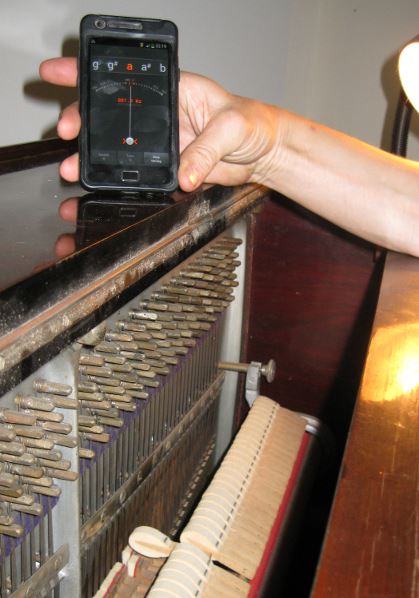My partner’s piano has (ever since she can remember) had one key (the A6) that was out of tune. Inevitably it’s a key that many pieces of music require.
Recently (while watching the remake of the movie Total Recall) I heard a piece from Beethovan’s Tempest (Sonata No. 17) and suggested to S that she should learn to play it. If you don’t know the piece you can see a rendition of the Total Recall version (played much slower than the original) here on Youtube:
Of course Tempest requires A6, so yesterday – in the face of stern warnings to the contrary on a label inside the piano – we set about attempting to tune that key.
The piano is an upright, a Beale Vader semi grand. It is over 100 years old based on the serial number, and despite not having been tuned in at least 50 years (if ever) it is still surprisingly in good tune (mind you this was the Beale’s claim to fame that it would hold its tune come hell or high water, which seems to be true!). Apart from one key.
Thanks to modern technology tuning things is much easier than it once was. For instance, to get the note right, I simply downloaded a tuning app (called G-String) to my phone.
Tuning a piano if you have the right tools is not really a difficult task. It’s like tuning a guitar, only you can’t sit it on your lap. Each key has three strings behind its hammer and all of the strings have to be tuned to the desired note to create that wonderful, crisp, unique piano sound.
I made up some wedges to mute the two strings that weren’t being tuned and we set to work. The result was good, not perfect, as one string was fractionally higher than the other two, but definitely a serious improvement over its tone before tuning.
And as to the question: do you always tune pianos in the nude? Well, maybe ;-)
John.


